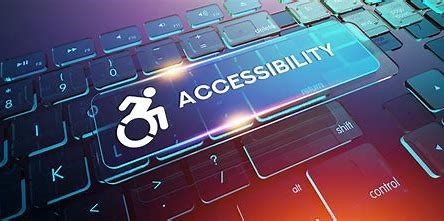Digital marketing has the power to reach millions of people, but what about the 1.3 billion individuals living with disabilities? Inclusivity is taking on an increasingly important role in marketing campaigns, allowing many consumers to identify with brands despite societal standards. However, accessibility remains a major issue for many consumers, who are unable to experience the digital world as they would like. In an interconnected world, accessibility is no longer a bonus but a necessity for customers and organizations. This article explores how and why companies should prioritize making their digital content more accessible.

Understanding Web Accessibility
Web accessibility is about designing digital content that is usable by a wide range of users, regardless of their disabilities. This approach ensures equal online opportunities for everyone, promoting inclusivity across digital platforms.
Industry standards for inclusive digital experiences
To help companies implement accessibility, guidelines such as the WCAG (Web Content Accessibility Guidelines) offer practical recommendations. These standards include features like subtitles and transcripts for those with hearing impairments, and keyboard or voice-command navigation for users with motor disabilities. Brands like Microsoft set a benchmark with their accessibility efforts. Through the “We All Win” campaign and the Xbox Adaptive Controller, Microsoft has empowered disabled gamers. Their website also integrates features such as subtitles, adjustable contrasts, and screen reader compatibility to enhance user experiences.
The benefits of an digital accessibility for an organization
Making digital content accessible not only broadens a company’s audience but also improves user experience. This inclusivity leads to higher engagement as more people interact with accessible content. Furthermore, it strengthens brand reputation by showcasing a company’s commitment to inclusivity and setting it apart from competitors.
Tools and technologies for accessible web design
Several tools can assist businesses in achieving accessibility:
- Screen readers like JAWS (Job Access With Speech) and NVDA (Non Visual Desktop Access),
- Browser extension plugins,
- Color Contrast Checker,
- Automated testing tools ensure content meets accessibility standards,
- KPIs, such as conversion rates, can measure the effectiveness and impact of web accessibility initiatives.
In conclusion,digital accessibility is not just a legal requirement; it’s a strategic opportunity. Companies that prioritize it can differentiate themselves and deliver an enriched online experience for all users. Also, no tool or guideline can substitute for feedback from actual users. Conducting testing sessions with individuals with disabilities can offer relevant insights into how to enhance a website’s accessibility.
Bibliography:
- Accessibility by design: An Apple Watch for everyone – WWDC21 – Videos – Apple Developer
- Apple, creatives, and disability rights activists reflect on 30 years of the Americans with Disabilities Act – Apple
- Règles pour l’accessibilité des contenus Web (WCAG) 2 – Vue d’ensemble | Web Accessibility Initiative (WAI) | W3C
